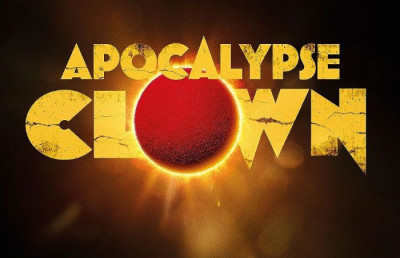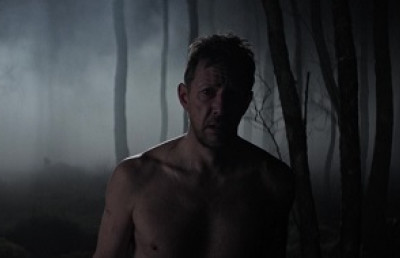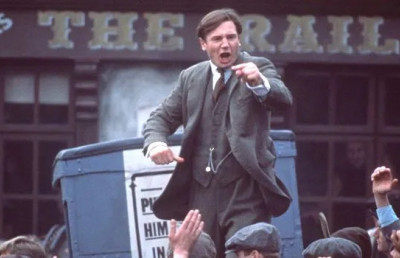State of ImagiNation: The Fifth Province of Irish Cinema
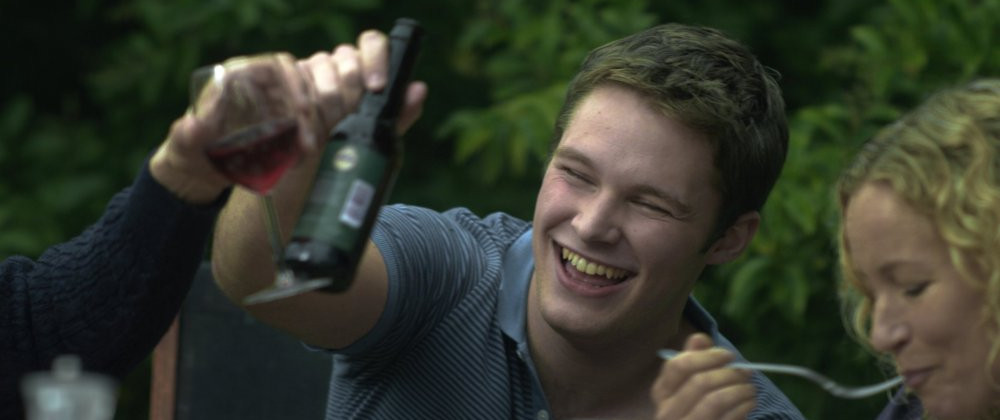
What Richard Did (photo source Element Pictures)
The movie mogul Louis B. Mayer reportedly said on his deathbed, “Nothing matters. Nothing matters.” However in reel life, everything matters. The unruly topic of cinema and nation demands of us certain acknowledgements: that cinema is a producer of images mediated by people and their culture; that it is an art form which is also a product of industry; that its birth coincides with the rupture of empires and the emergence of nation states that are themselves the result of revolution and radical politicking. Contemporary thinking about national cinemas is informed by certain formulations arising from latter day Marxian writers such as Eric Hobsbawm and Eric Gellner. Specifically it is dominated by the writings of Benedict Anderson. As J. Hoberman reminds, us, “United before the same vision, enthralled by a common illusion, a populace might well believe itself to be a nation” (Hoberman, 2003: xi). If by ‘nation’ we understand the mythical concept attaching to nationalism that Anderson conceptualises as ‘imagined communities’ we should examine this framework further as a prism through which to view the crisis in creativity which seems to beleaguer the contemporary Irish film industry.
Any film history is part declaration, part reclamation. For author Denis Condon, early Irish cinema operated as a kind of intertextual prism for current events and pre-existing forms of entertainment: Early Irish cinema was lively but problems arose in the various sectors which stymied international distribution and exhibition. As Condon avers,
Rather than the four sectors of production, distribution, exhibition and reception, the ‘great institution of Kinematography’, as it developed in Ireland in the late 1910s looked more like consisting of an industry of two very unequal sectors – exhibition and indigenous production – bridged to some extent by the sheer will of the third, reception. The far larger sector was engaged in operating, servicing and regulating film exhibition, relying on foreign film productions supplied by a competitive distribution business and shown at dedicated venues that increased in quantity and quality as the decade progressed…
The fledgling indigenous production sector, essentially consisting of FCOI [Film Company of Ireland] and GFS [General Film Supply] at the national level, was shaped by its relationship to the exhibition sector. That FCOI included several key personnel who were prominent in Ireland’s most prestigious theatre reflects an international trend towards legitimation of the cinema. This included a preference for a naturalistic style of ‘verisimilar’ acting above the ‘histrionic’ style of melodrama that had been a boon in first adapting narrative to early cinema. (Condon, 2008: 260; 261)
Problems with storytelling skills, distribution and the involvement of industry workers in political activities further hindered the industry’s early development. The popularity of early film was complicated by Easter 1916, issues with exhibition and then the following wars which lasted into the next decade. Another decade of violence followed as a new state began to be created. Thus the conditions in which cinema first emerged in Ireland were rocky, both socially and politically, with the inevitable repercussions in the culture and contingent on the deployment of the military and paramilitary against both native and British. According to Anderson, the disintegration of the sacral and the emergence of the printed word coincides with the rise of the revolutionary, which in Ireland had commenced as a mainly Protestant movement but then became inextricably embroiled with and ultimately confused and dominated by a kind of radical Catholicism. Representation of violence in the 1920s thus became vital to the establishing of an alternative as the desire for economy of expression demanded a shortcut to explain the battle against Britain and the emerging industry began to have an identity alongside other national cinemas albeit without the technical virtuosity or even a coherent narrative impulse. Cinema then had an epochal existence in fits and starts as a result of financial and distribution problems, first as a kind of personal or political expression; then in the post World War 2 years when Hollywood had created representations of Irishness that had a universal import but were reliant on common tropes as much fiction as fact; the drunkard, the domineering mother, the feisty colleen, the wayward son, the troublesome priest. Ideas were being parsed amongst fictional sorties in films which we must remember were then being made largely by British filmmakers, themselves attempting to deal with end of Empire, including the fabled Odd Man Out (Reed, 1947) which invariably conflated Irishness with violence, seemingly without a cause, despite its clear setting in Belfast, an occupied city in British territory.
Irishness then became a misunderstood global quality perhaps most famously deployed in the Fordian vision of The Quiet Man 1952); and then Disneyfied in Darby O’Gill and the Little People (1959), which at least had high production values and an understanding of the country’s sly brutalising mendacity and the hypocrisy of Catholic priests in this evocation of H.T. Kavanagh’s stories. Once this was a staple of television schedules on the fabled St Patrick’s Day, now it is lost to coverage of multicultural festivals for immigrants which have no more relevance to the country’s natives than that celebration ever did. With the involvement of transplanted country gent, John Huston, Ireland became a favoured occasional location in the Ardmore Studios years. The eventual development of the Irish Film Board and the government’s decision to create a set of tax incentives gave birth to a haven for production and ushered in a new era of filmmaking, putting the country on the international stage in the 1990s with large-scale productions such as Braveheart (Gibson, 1995) paradoxically set in Scotland but seemingly echoing the popular perception of the locals’ penchant for freedom, revolution and group violence.
O’Mahony and Delanty qualify their definition of national identity into two sorts:
National cultural identity is constructed around values and rules of collective belonging that are embedded in a nation’s social institutions, for example, family, religion, education. National political identity is built upon the values and rules that guide political practices and institutions. (Op.cit.: 3)
The connection between nation, state and church has been an issue of social concern since the beginning of the State. Catholic dogma was incorporated into the Constitution which effectively meant that the State was acting upon theocratic aims; while social problems became the preserve of a few adjuncts of the State in conjunction with voluntary organisations which were for the most part connected with and driven by the Catholic Church. The anticipated transformation in structural inequality following the Government’s decision to take on the welfare system in the 1960s as well as introducing free access to third level education did not take place: instead a level of corruption virtually unprecedented in Europe took place in high office and decade-long inquiries on issues such as planning are happening to this day. Most of these involve members of Fianna Fáil (The People’s Party), which has formed Governments for 80% of the time since the inception of the State. Along with the withering of faith in politicians, the high water mark of what might be called the protest cinema of the 1970s has faded away to the semi-commercial product that is being made today. Along with other facets of industry in a country without any manufacturing capacity, Ireland is primarily noted as a location for third-party companies seeking tax benefits and cheaper labour costs than their originating countries. It is now a haven for huge American corporations such as Google and Facebook, latterly revealed to be dedicated to the destruction of privacy on behalf of the NSA and the CIA.
The ‘new Ireland,’ in which the State’s agenda is dictated by Europe, contains the difficulties to which O’Mahony and Delanty allude in their critical analysis to the concept of national identity which they define as follows:
National identity is the cultural outcome of the discourse of a nation. This identity serves many purposes. Firstly, it provides a sense of collective belonging to a group of people who perceive themselves bonded by a common experience, and a reference system for distinguishing one group of people from another. Secondly, it is the basis for deciding who should be allowed to be full and acknowledged citizens of a nation-state. Thirdly, it influences the character and goals of this nation-state in a manner supposed to be in the collective interest of all the people. National identity is located in the space between the collective cultural identity of the nation’s people – what they consider themselves to be and desire to become – and the political identity that transfers the substance of cultural identity into values that underpin political activity. It is, therefore, both a cultural and political phenomenon, endlessly translating changes in collective images of desirable ways of living into goals of political life. (O’Mahony and Delanty, 2001: 2)
The contemporary mode of address in films utilising the post-Troubles situation in Northern Ireland to dramatise issues arising during the period of unrest is debated by David Hanley in his dissection of Bloody Sunday (Greengrass, 2002) and Omagh (Travis, 2004). Both films had screenplays by Paul Greengrass but the terms of address of the latter vary from the earlier film which has a pro-Republican position. The 26-year difference in the events (both are essentially historical films) and the fissures which emerged in the interim (the pre-Belfast Agreement era being the dominant context of the latter) means that the second film is one that is intended for a wider audience, though that does not relegate the affect of Bloody Sunday, a dramatised interpretation of one of the most nefarious episodes of the Troubles. The scope of difference lies in the films’ intent to construct a political and not merely a personal, emotional cause, creating a wedge between them and the earlier films about the situation directed by Neil Jordan and Pat O’Connor (Angel, 1981; Cal, 1984) which depended less on determinism than a personal poetic.
The concepts of the post-national and the post-nationalist – the latter, in the case of Ireland (north and south), emphasising current changes in analyses of nationalisms – have caused an intense debate in various fields of knowledge, often from opposed stances. The idea of post-nationalism now appears to be an inevitable reality in the current global circumstances, but it is also a theoretical framework, which constitutes an attack on the democratic foundation of current states, or on the idea of national communities and their identities and origins. In terms of a country where national identity is inextricably interrelated with the very constructedness of cultural nationalism and the Irish Literary Revival, contemporary interrogation of traditional definitions of Irishness (which is usually and inappropriately inclusive of both sides of the border) also raises questions about cultural responses to the consequent problematic definitions of Irish national identity. Relative to the continental European experience, O’Mahony and Delanty have examined the impact of globalisation and how it has caused not only the emergence of a new variant on the nationalism which developed in the nineteenth-century as a product of the intelligentsia (1996), but has also opened up “a space for reflection . . . in which to search for new collective identities” (O’Mahony and Delanty 2001: vii). This corresponds with Anderson’s idea of the sacral word being replaced by a codified mythology put in currency by a secular move dedicated to nationalist transformation in the latter stages of the nineteenth century. In this formulation, a post-national European identity is one possible option, inspired by Habermas’s analysis of citizenship and national identity in contemporary Europe. This lends itself to the suggestion that Ireland, in line with European modernity, is in “an overt phase of crisis and contradiction” in which inherited constructs of nationalism and national identity are questioned (Op.cit.: vii). This process is analysed by Richard Kearney in Postnationalist Ireland (1997), raising the issue of definitions of nationalism in a world lacking sovereignty. O’Mahony and Delanty’s view is further complicated by the claim that the negative implications of nationalism, in whatever coded formulation, have never been properly analysed from a sociological perspective. This has an interesting effect on the study of Irish cinema, where the issues of nationalist ideology have mostly stressed the impact of terrorism waged by the British state, and rarely interrogated the true rationale behind IRA/Catholic warfare, either in a contemporary sense or retrospectively, in period dramas seeking to recreate the historical.
The twenty-first Irish century is the child of religious warfare that for the most part took an internecine shape; and the country’s fiscal and social problems are far more pressing in a daily sense in an island that was always ‘multi-channel land,’ that is to say a post-colonial country filled with TV aerials receiving the BBC signal. It is also a bifurcate island which is now plagued with issues of identity as a result of secretive deals with the European Union to tackle the bulk of the region’s refugee problem under a clumsy legal arrangement forged in limitless passport allocations to the Republic sanctioned in the small print of the so-called Good Friday Agreement in 1998, a Biblical nomenclature that has wrought a plague on both houses. We’re all in it together now, whether we like it or not. To paraphrase legendarily confrontational filmmaker Bob Quinn, Ireland no longer has its own language, culture, borders, sovereignty or currency; and its participation in (and domination by) the European Union would suggest it therefore no longer constitutes a nation. It is now a republic of hundreds of different nationalities with no immigration controls and limited say in a hugely expanded super-state and a massive debt being governed by the despised ‘troika’.
The issue for Irish cinema is what a new Ireland actually is: the most critically lauded ‘Irish’ films (i.e. films with Irish subjects) of fairly recent years were made by two British filmmakers – Ken Loach and Steve McQueen, who made The Wind that Shakes the Barley (2006) and Hunger (2008) respectively. This raises the spectre that Irish cinema is perceived to be politically engaged and thoroughly steeped in a violent past that a contemporary Irish public would possibly prefer not to witness with a lack of our own recent historical or heritage films bearing witness to that assertion. By far the most successful films box office-wise at local level in the past decade have been comedies - Man About Dog (Breathnach, 2004) and The Guard (McDonagh, 2011). Irish cinema has been permanently and possibly fatally confused with a Northern Irish cinema, which, as Ruth Barton states, should arguably be considered a part of British national cinema (2004: 6). We are reminded of Ernest Gellner’s statement: “Nationalism is not the awakening of nations to self-consciousness: it invents nations where they do not exist” (Gellner, 1964: 169). In keeping with the country’s literary tradition, the literalness of adaptations is what distinguishes current output. The vacuum in commercial storytelling can be understood by the extraordinary reception given What Richard Did (Abrahamson, 2012) a remarkably slender morality tale which interprets a 2008 novel by Kevin Power, Bad Day in Blackrock, itself a re-imagining of a notorious true crime committed by middle class rugby boys in South Dublin outside a nightclub some years earlier. The book might be said to come from a position of enlightenment rationalism in which random acts of illegitimate violence can be explained away by a minority nationalist. It is a valve releasing the suppressed fears arising from a country gone mad on borrowed money during the peak of the so-called Celtic Tiger years. Richard Karlsen (Jack Reynor) is from a monied background but it isn’t enough – he tries to seduce his friend’s girlfriend, he takes drugs, he drinks too much, he has al fresco sex with impressionable underage girls and he ponders life from his family’s beach house on Brittas Bay, long a favoured destination of Dublin’s middle class.
The local critics were especially appreciative of the work, with five stars awarded to it across the board. The Irish Times critic stated:
The characters are nuanced and brilliantly realised: the kids are privileged yet have little in common with the amoral, spoiled monsters that populate Larry Clarke’s similarly paced Bully. They slip off for drinks and sex in the park but they also do school spirit and say thank you. Richard behaves callously but mostly cluelessly. The clean, casual lines of David Grennan’s cinematography add to the sensation that we’re watching a greatly needed antidote to an entire hysterical history of delinquent youths on screen. There are no direct references to the source novel (Kevin Power’s Bad Day in Blackrock) or the case that preceded it. There are only imperfect teens with imperfect lives ahead. (Brady, 2012,unpaginated)
The state broadcaster’s reviewer was similarly sympathetic:
This may seem like a film posing questions about class and privilege but What Richard Did is really a sympathetic and moving portrayal of a much-lampooned archetype, a rich kid who endangers everything by doing something stupid that is all too believable. If anything, it’s a film that quietly insists that human frailty and human stupidity are classless. But Abrahamson doesn’t do morality tales – he’s much more serious and real than that and this is a beautifully constructed and acted example of his art. (Corr, 2012, unpaginated)
However the film’s lack of forward-moving narrative based on a screenplay by Malcolm Campbell and the visual palette of a variety of greys dulls the impact. The only slight suggestion of dissent on the part of the local critics came from Darragh McGrath:
What Richard Did is a compelling, tough film about modern Ireland that perhaps leaves one too many stones unturned, yet still makes such a strong impression that it will stay on in your mind long after the credits roll. (McGrath, 2012,unpaginated)
We are never given the opportunity to see where Richard obtains his ferocious reputation and legendary charisma because the screenwriter chose not to depict a rugby game – a fatal problem in developing the character of the protagonist or in illustrating his lairy attractiveness to both sexes. It is surely on the sportsfield that such a paternalistic bully’s behaviour, tactics and skills at performing violent acts in an apt context could be revealed. It is a bizarre decision in a film of many such decisions. Interviewed on the film’s UK release, Abrahamson stated:
“It’s the kind of situation we all know, where we disappoint ourselves, and we have to deal with the disjunction between what we would like to be and what we are. I was interested in the narrative of how we nurture our elite in this society: all that stuff about believing in yourself and not accepting second best. Our inner world is at odds with that. What’s fascinating about a boy of Richard’s age is that he still believes in his own bullshit … it’s naïvely held and it can be attractive.” (Gilbey, 2013: 14).
Great films find a way of externalising the inner life of the protagonist – Psycho (Hitchcock, 1960), Lawrence of Arabia (Lean, 1962). What Richard Did contains a notable amount of sequences featuring the protagonist staring at the sea, presumably to salve a troubled conscience; a couple of unconvincing scenes of off-pitch jollity with his sporting colleagues; and a casting decision which was presumably occasioned by co-financing (a Swede playing the boy’s father) which skews the supposed point of the narrative – that there is something innate to the Irish that makes them commit violence. It makes no attempt to persuade us of background, character or motivation even though the original material’s point was to savagely critique a privileged South Dublin cadre. There is very little by way of narrative action and the killing at the story’s fulcrum is so poorly staged and cursorily shot that it is difficult to see what is going on (in Adam and Paul, 2004, Abrahamson similarly deflated the potential of a carjacking which was shot from the wrong angle). This lack of dynamism or clarity however would appear to be crucial to our maintaining sympathy with the protagonist. What might have rescued this impossibly hamstrung scenario would have been the demonstrating of the attack from different perspectives, with the story told by various of the boys who participate in the killing, in an eventual Rashomon-like telling of the truth. However there is no concern with truth. Richard’s father is a conspirator to silence and the confession scene is staged to conjure memories of Robert Towne’s devastatingly subtle exchange of power between Brando and Pacino in The Godfather (Coppola, 1972), which merely reveals the desperately trite and unsubtle nature of the impoverished dialogue throughout Richard. The protagonist carries on as before – getting drunk, taking drugs, shagging young girls. It is a very strange narrative choice for a director whose academic background is in philosophy. There seems to be no curiosity in the drivers of human behaviour. In short, there is nothing at stake.
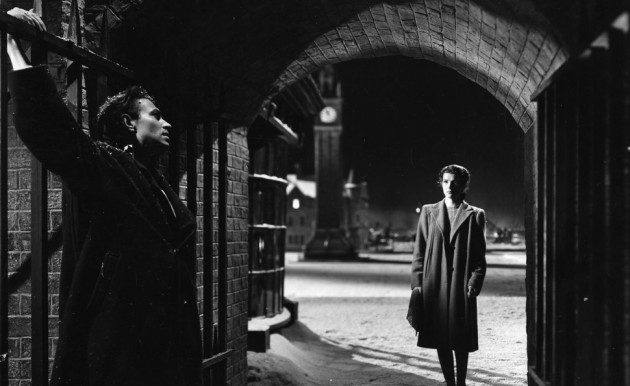
Odd Man Out (photo source Two Cities Films)
The film is carried by the mostly silent presence of an actor who has since gone on to be cast in Transformers 4: Age of Extinction (Bay, 2014), as he inhabits this passive-aggressive character whose modus vivendum is popularity, at whatever cost. The critics loved it, yet at its heart is a gaping vacuum, less a strategic method of resistance than a deliberate aesthetic positioning of avoidance, albeit one hinged on an act of seemingly unmotivated violence bringing us back to that hoary old trope crystallised by Odd Man Out. The film’s flaw, perhaps, rests upon the notion that fatal indifference (on the part of the makers as much as the protagonist) and moral equivocation equates to narrative significance. This lack of commitment to a point of view replaces the need for reality with the affect of realism. It appears that we now occupy the space between in this epochal drift towards a narcissism of scant variety. What is in the space is non-existent as the nation struggles to create any kind of identity in a culture awash with contradictory values and imported disturbance emblemised by the film’s own narrative refusal to engage with the naturally conciliatory impulse of cinema itself, carrying on a supposedly humanist tradition identified by John Hill in the seminal analysis, Cinema and Ireland (Rockett, Gibbons and Hill, 1987/88). If the filmmakers don’t care What Richard Did, why should an audience? Since that production, director Lenny Abrahamson has avoided any narratives proposing an examination of the bourgeois or any other political precept and achieved Hollywood success with an adaptation of Emma Donoghue’s kidnap Irish-Canadian co-production story Room (2015). He is currently enjoying small screen attention with what might be termed a hybrid of slow TV and porn in another novel adaptation Normal People (BBC3/Hulu 2020) which is finding a ready audience in this period of lockdown.
Political cinema has been entirely generic since What Richard Did and is all the more successful for it on every level – aesthetic, narrative and commercial. 2014 saw the release of Belfast-set ‘71 a film whose notion of patriot games is ratcheted up a poetic notch by taking its inspiration from the aforementioned Odd Man Out. This time the drama of entrapment centres on a wide-eyed British squaddie who is alternately running around the city and hiding wherever he can in a race against time after being inadvertently abandoned by his military unit during a violent riot. Breathlessly shot and paced, this is the best Northern Irish film since the Carol Reed masterpiece, its genius perhaps deriving in part from the cold eye of strangers in a strange land – Scottish playwright Gregory Burke and French-Algerian director Yann Demange – but also because it cleaves to the rules of the best thrillers. This is about someone running for his life and he is brilliantly played by Jack O’Connell as the young soldier who quickly learns that there are black ops and bad guys on both sides in this dirty war. It’s a rites of passage movie dialed up to 11 and then some; politics are almost an afterthought until you remember they’re everything, as he grows up overnight, battling his way through the nightmare nocturnal cityscape.
More recently, there has been a blockbuster (in local terms) at the box office that sits in another genre we can all recognise: described as a revenge western, Black 47 has an apposite structure for a story that seeks to describe the psychological wound and schematic genocide caused by the Famine enforced by British occupying powers in Ireland 170 years ago. It delivers a revisionist resistance punch to the oppressors in entertaining fashion. Adapted by P.J. Dillon and Pierce Ryan from their Irish language short An Ranger it was written by director Lance Daly and Eugene O’Brien and ups the ante for filmmakers who have been noticeably underwhelming in their willingness to examine the country’s history. We see the bodies dead from starvation as they mount up in corners; food is held under armed guard before being exported to Britain; we understand that the term ‘taking the soup’ derives from people who really were served broth on condition that they convert to Protestantism in a nationwide evangelical drive and they did it rather than die of starvation. Recently featured in the ITV Sunday night drama Victoria (2016-), which elicited an extraordinary response from British audiences hitherto seemingly unaware of the mass killings carried out in their name, this is the first time that the Famine has been properly dramatized on the big screen, a strange fate for a significant disaster that lives as trauma in folk memory and in the huge emigration figures that have stalked the country ever since. The film’s title is based on the fact that in 1847 4,000 ships exported food from the country while 400,000 Irish men, women and children starved to death during a devastating blight on the potato crop which was the sole food left to them. The disease affected whole swathes of the European continent but Ireland’s position was worsened because of its geographical location and the conditions of the British occupation. Taking the action movie approach to this emotive history is smart because it immediately personalises the motivation in an easily digestible story that fulfils a kind of empathetic nationalist fantasy about a horrific political crime. While it mostly moves at high speed as a returning Irish Ranger (James Frecheville) seeks revenge for the family he left behind who were put out of their home and killed, it gains contemporary resonance from his recent service for the British Army following deployment in Afghanistan and boasts almost surreal sequences of violence. It helps that it looks beautiful – who knew that there were so many shades of grey in those mackerel Galway skies which are shot to look like Paul Henry paintings by Declan Quinn. It is irksome, however: a lot of the dialogue is in the Irish language and the translated text irritatingly bobs about in different parts of the frame; and one might argue that the film should have had an Irish leading man (Frecheville is Australian) in what is effectively the Clint Eastwood role of the turncoat, albeit one camouflaged by a gigantic ginger beard. Hugo Weaving also has a significant role. However local performers Stephen Rea, Barry Keoghan and Moe Dunford have very good supporting roles and Jim Broadbent is brutal as the vicious absentee landlord, allegedly based on an ancestor of the notorious missing Lord Lucan. For a film that is rooted in a country where politics permanently play both ends against the middle it is apt that it ends at a crossroads.
If we accept the basic premise that cinema is a mediating tool that manufactures political imagery then the paradigmatic machine ought to be capable of a cogent handling of events and their simulacra. However the idea of an Irish nation, with its implications of idealism; its historical connections with a coercive Catholic theocracy; and a culture of anti-Britishness that is more to do with organised violence by paramilitary drug gangs than common sense or daily experience in an economy whose major trading partner and linguistic ally is Britain, remains deeply embedded in a problematic conceptual framework which Irish film still struggles to express. Irish cinema is still, if only occasionally, futilely attempting to breathe new life into tired cliché. The two significant auteurs, Jordan and Sheridan, operate both at home and abroad, in a local production sense and in the Hollywood arena, in an arbitrary domination of a small-scale industry which is predominantly oriented to art-house productions that continue to prove a difficult sell to homegrown audiences and with no investment from –and thereby no obligation to be screened by– the state broadcaster. The Sunday Times reported that the Irish Film Institute declared its intention to abandon screening local productions if they didn’t perform on opening weekends, constricting theatrical outlets for low-budget films (Shortall, 2013: 3); while satirical magazine The Phoenix maintains a sceptical watcheye on those particular production companies and personnel allegedly favoured by The Irish Film Board (a state funded organisation) regardless of their box office returns (12 July 2013: 20).
The de-centring positions offered by the protest cinema of the 1970s have long departed and the appropriating of the Hollywood model has been only moderately and sporadically successful. What exists now is a cultural pause. If Irish cinema were a living, breathing machine, it would be characterised as one that had outgrown its folk memory and is continuing to formulate itself for itself, puffing and wheezing in the new millennium, a fifth province of the post-national imaginary, indifferent, irrational, indecisive and inconclusive. One is reminded of playwright John Arden when he said in the role of the landlord in Caoineadh Art Uí Laoire (Quinn, 1975), “it’s only a play, it has no real relevance to what’s going on today.” But it has. It matters. Everything matters.
(Submitted 2013, revised 2020)
Bibliography
Books
Althusser, Louis (1971). ‘The Ideological State Apparatus,’ in Lenin and Philosophy and Other Essays. London: New Left Books
Anderson, Benedict (1993). Imagined Communities. London: Verso.
Barton, Ruth (2004). Irish National Cinema. London: Routledge.
Condon, Denis (2004). Early Irish Cinema 1895-1921. Dublin & Portland: Irish Academic Press.
Gellner, Ernest (1964). Thought and Change. London: Weidenfeld and Nicolson.
Hill, John, Martin McLoone and Paul Hainsworth, (eds.) (1994). Border Crossing: Film in Ireland, Britain and Europe. Belfast: Institute for Irish Studies and London: British Film Institute.
________ and Pamela Church-Gibson (1998). The Oxford Guide to Film Studies. Oxford: Oxford University Press.
Hoberman, J. (2003). The Dream Life: Movies, Media, and the Mythology of the Sixties. New York: The New Press.
Hort, Metje and Scott Mackenzie (eds.) (2000). Cinema and Nation. London: Routledge.
Kearney, Richard (1997). Postnationalist Ireland: Politics, Culture, Philosophy: Politics, Literature, Philosophy. London: Routledge.
LeCorff, Isabelle and Estelle Epinoux (eds.) (2009). Cinemas of Ireland. Cambridge: Cambridge Scholars Publishing.
McLoone, Martin (2000). Irish Film:The Emergence of a Contemporary Irish Cinema. London: BFI Publishing.
O’Mahony, Patrick and Gerard Delanty (2001). Rethinking Irish History: Nationalism, Identity and Ideology. London: Palgrave.
Pettitt, Lance (2000). Screening Ireland: Film and Television Representation. Manchester: Manchester University Press.
Power, Kevin (2008). Bad Day in Blackrock. New York: Pocket Books.
Rockett, Kevin, Luke Gibbons and John Hill (1987/88). Cinema and Ireland. London: Croom Helm.
Slide, Anthony (1988). The Cinema and Ireland. New York: McFarland & Co.
Wapshott, Nicholas (1990). The Man Between: A Biography of Carol Reed. London: Chatto and Windus.
Journals & Articles & Essays
Anonymous. ‘White Smoke at the Irish Film Board,’ The Phoenix, 12 July 2013: 20.
Brady, Tara (2012). ‘What Richard Did,’ The Irish Times, www.irishtimes.ie. Accessed 16 September 2013.
Brereton, Pat ‘Religion and Irish Cinema: a Case Study,’ Dublin City University, http://doras.dcu.ie/4499 Accessed 01 Jan 13.
Corr, Alan, (2012). ‘What Richard Did,’ www.rte.ie. Accessed 16 September 2013.
Crosson, Sean. ‘Vanishing Point: An Examination of Some Consequences of Globalization for Irish Film,’ E-Keltoi Journal of Celtic Studies, Vol.2: 1-23. Accessed 01 Jan 13.
Fennell, Nicholas (2005). ‘The Alternative Within the Mainstream: A Critical Analysis of Some Recent Irish Films,’ Dublin City University. http://doras.dcu.ie/17369/nicholas_fennell_20120705085234.pdf. Accessed 01 Jan 13.
Gettino, Octavio and Fernando Solanas. ‘Towards a Third Cinema,’. in Bill Nichols, (ed.) Movies and Methods Vol. I. Berkeley and Los Angeles: University of California Press, 1976: 44-6.
Gilbey, Ryan. ‘Fall Of A Good Guy,’ The Guardian, Review 04 January 2013: 14-15.
McGrath, Darragh, (2012), ‘What Richard Did,’ www.spooool.com.
Shortall, Eithne, ‘Cinemas Shout Cut on Irish Films: Movies Are Being Pulled After Poor Weekend Box Office Returns,’ Sunday Times, 15 September 2013: 3.
Online References
Hanley, David. ‘The Representation of Non-Violent Political Activism in Bloody Sunday and Omagh,’ Offscreen, Volume 16, Issue 7, July 2012. https://offscreen.com/view/non-violent_political_activism
White, Jerry. ‘The Films of Bob Quinn: Towards an Irish Third Cinema,’ www.conamara.org.php. Accessed 01 Jan 13.
Copyright Citations
Images property of Two Cities Films (Odd Man Out), the Walt Disney Company and Element Pictures (Richard).
Select Filmography
Adam and Paul (2004) d. Lenny Abrahamson
Black 47 (2018) d. Lance Daly
Caoineadh Art Uí Laoire/The Lament for Art O’Leary (1975) d. Bob Quinn
Darby O’Gill and the Little People (1959) d. Robert Stevenson
In America (2003) d. Jim Sheridan
The Informer (1935) d. John Ford
Maeve (1981) d. Pat Murphy
Michael Collins (1996) d. Neil Jordan
Odd Man Out (1947) d. Carol Reed
Ourselves Alone? (1995) d. Donald Taylor Black
The Quiet Man (1953) d. John Ford
Ryan’s Daughter (1970) d. David Lean
’71 (2014) d. Yann Demange
What Richard Did (2012) d. Lenny Abrahamson




